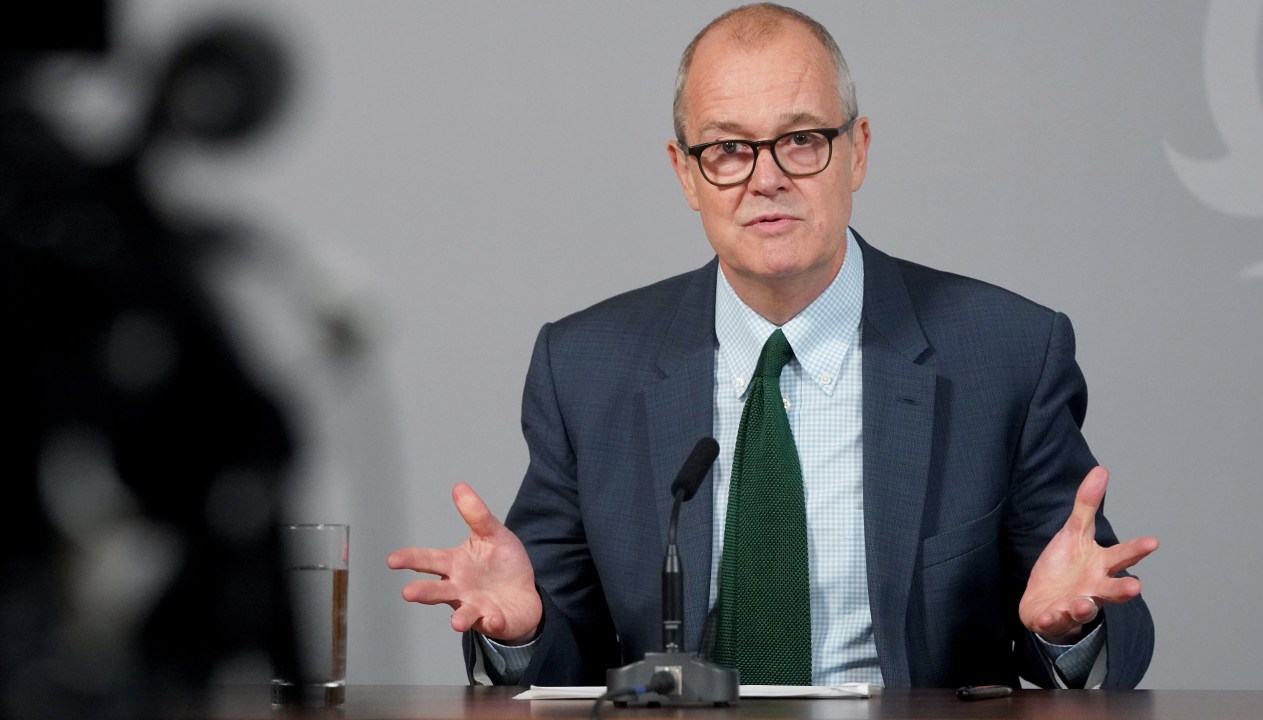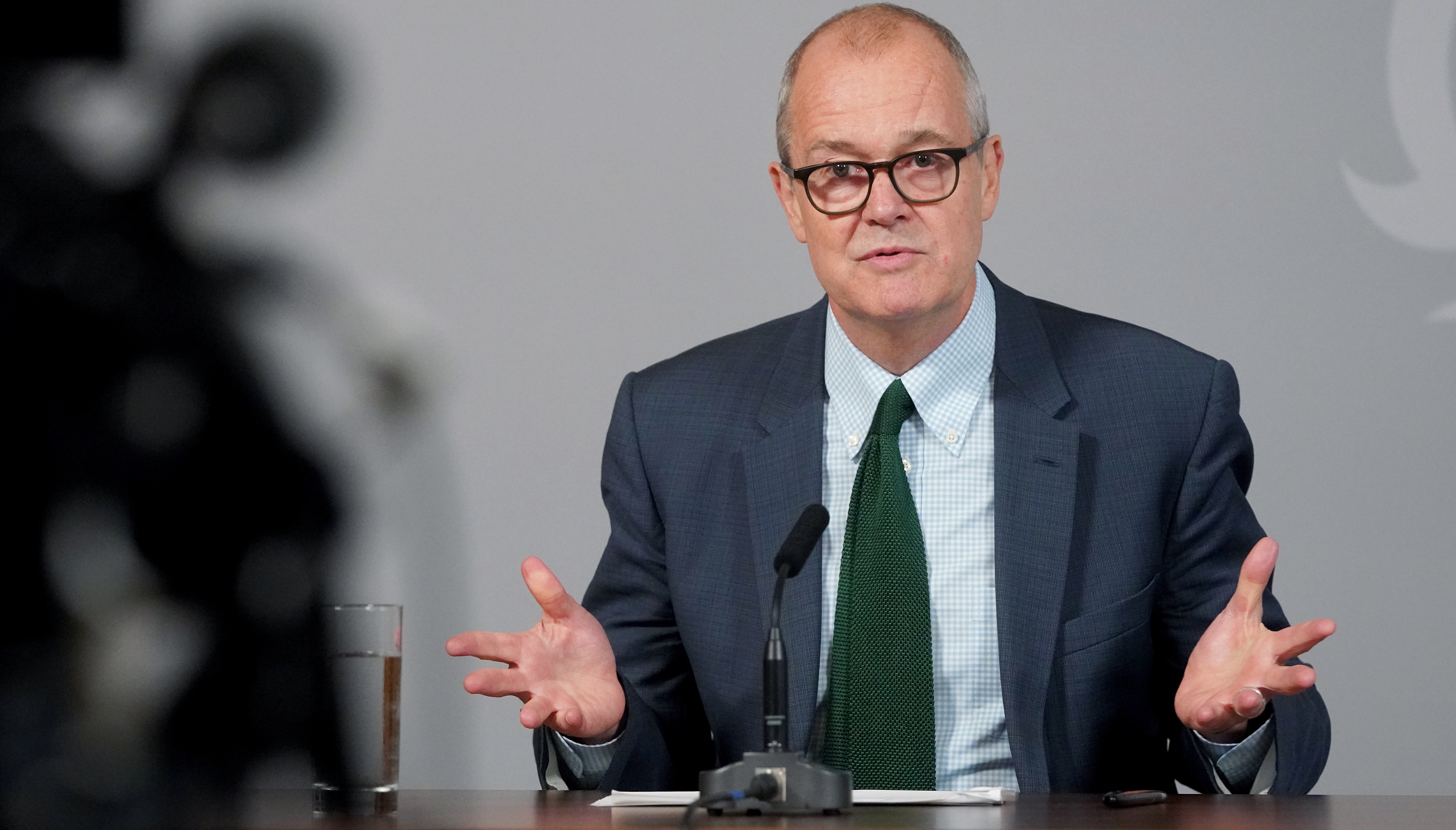The chief medical officer, professor Chris Whitty, and chief scientific adviser, Sir Patrick Vallance, made a statement this morning on the latest data surrounding Covid-19, laying the groundwork for new restrictions that the government is expected to announce tomorrow. It wasn’t a press conference with questions, so they could not be challenged on what they presented — but there were plenty of questions to ask. Here are five:
1. Why present only one Covid ‘scenario’ – with extreme assumptions?
Sir Patrick presented a graph showing a frightening exponential rise in cases to 49,000 a day by mid-October — if cases continued to double every seven days. He emphasised that it wasn’t a prediction, yet only presented one scenario. The idea that cases are doubling every seven days is based on data from a very brief period in late August and early September. But in France and Spain — which are being watched closely, under the assumption that the UK is following the same Covid-19 trajectories — cases took three weeks to double. Moreover, the graphs presented to us show that cases there are no longer rising at an exponential rate — in fact, the rise is starting to level off. If the UK is following France and Spain, this does not support a scenario of Covid-19 infections doubling every seven days. Why didn’t he also show a graph with this scenario: that we follow either Spain or France?
2. The death scenario is not like it was in March. Is this being factored in?
The graphs they showed of rising cases and fatalities in France and Spain were framed to illustrate what appeared to be a dramatic rise in deaths, responding to a dramatic rise in cases. What they didn’t show — because the graphs only started in July — was that in the second wave of Covid-19 in Spain and France (and this applies to many other countries too) deaths are not rising by anything like the same proportion they were in the first wave back in the spring. In France, for example, recorded daily new cases are higher now than in the spring — 13,498 new cases were recorded on 19 September, compared with a peak of 7,578 on 31 March (looking at these graphs, we must remember that at the height the pandemic, testing capacity was significantly lower and only a fraction of cases were being detected). Does Whitty think it’s significant that deaths are nowhere near the levels they were in the spring? Deaths in France reached 153 on 18 September, compared with a peak of 1,437 on 15 April.
3. Is research on T cell immunity being taken seriously?
Sir Patrick said that ‘fewer than 8 per cent of the population has developed antibodies to the virus’ and therefore the vast majority remains susceptible. It is true that studies to screen the population for antibodies have shown results in the 6 to 8 per cent range. However, Sir Patrick did not reference research elsewhere which suggests that many more people might have gained some degree of immunity to the virus from their T cells, some from previous exposure to other coronaviruses — covered here the other day. Is he discounting the idea of mass T cell immunity and, if so, why?
4. The NHS was not ‘overwhelmed’ last time. Why is that a risk now?
Chris Whitty spoke of the threat of the NHS being ‘overwhelmed’. The Nightingale hospitals remained virtually empty. Why does he think there is a serious risk of hospitals being overwhelmed — and why hasn’t any data been made publicly available to discern capacity in NHS hospitals?
5. Why no lockdown deaths ‘scenario’?
Chris Whitty spoke of deaths from three different causes: direct deaths from the virus itself, deaths as a result of the NHS being overwhelmed, and those from the NHS spending so much of its resources on treating Covid-19 patients that it was forced to reduce treatment for other conditions.
What he didn’t mention, however, was deaths caused by fear: people dying because they were too frightened to go to hospital or seek medical attention for heart attacks and the like. Recent data shows that the number of heart attacks detected and treated fell by 40 per cent during lockdown. He has a ‘scenario’ for direct Covid-19 deaths. Has any attempt been made to draw a ‘scenario’ for deaths that would undoubtedly be caused by another lockdown?
Now listen to today’s Coffee House Shots podcast with Cindy Yu, Katy Balls and James Forsyth on the government’s scientific advice:
This article is free to read
To unlock more articles, subscribe to get 3 months of unlimited access for just $5









Comments
Join the debate for just £1 a month
Be part of the conversation with other Spectator readers by getting your first three months for £3.
UNLOCK ACCESS Just £1 a monthAlready a subscriber? Log in